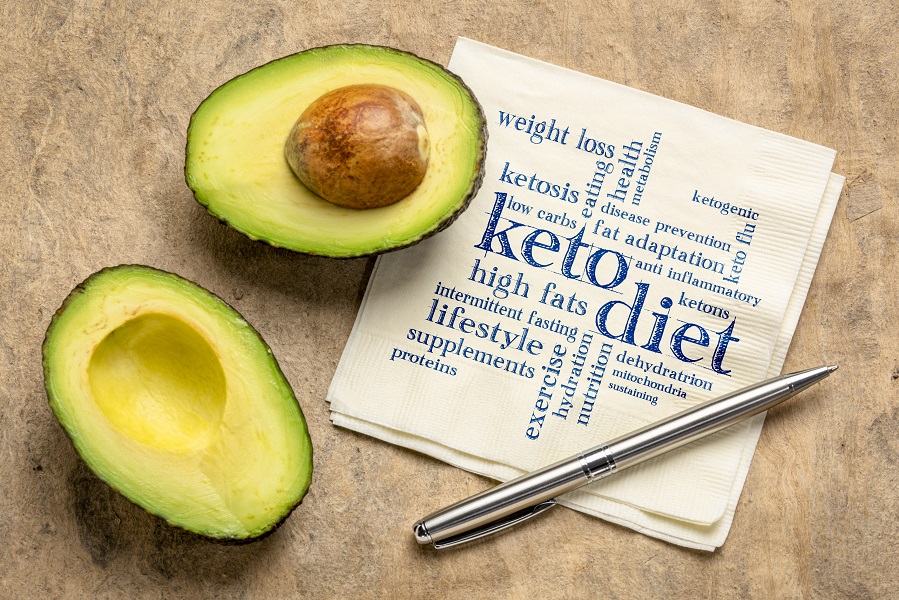Combining the ketogenic diet (keto) with intermittent fasting (IF) has become a popular strategy for those looking to lose weight, improve their metabolic health, or enhance their overall well-being. These two approaches complement each other perfectly, offering a synergy that can amplify your results. In this comprehensive guide, we’ll delve into what keto and intermittent fasting are, how they work, and how to effectively combine them for maximum benefits.
What is the Ketogenic Diet?
The ketogenic diet is a high-fat, low-carbohydrate eating plan that shifts your body’s metabolism from using glucose (sugar) as its primary fuel source to burning fat instead. This metabolic state is known as ketosis.
How Does the Keto Diet Work?
By drastically reducing carbohydrate intake, the body is deprived of its usual energy source (glucose). In response, the liver begins to convert fat into ketones, which become the new fuel for the body and brain. This shift can lead to significant fat loss, reduced hunger, and steady energy levels.
Benefits of the Keto Diet
- Weight Loss: By promoting fat as the primary energy source, keto helps in burning body fat.
- Appetite Control: Keto can stabilize blood sugar levels, reducing hunger and cravings.
- Improved Energy and Focus: Ketones are a more efficient fuel for the brain, often leading to better mental clarity and focus.
- Blood Sugar Control: Keto can help lower blood sugar levels and improve insulin sensitivity, making it beneficial for people with type 2 diabetes.
What is Intermittent Fasting?
Intermittent fasting is an eating pattern that cycles between periods of eating and fasting. It doesn’t necessarily change what you eat but rather when you eat.
Common Types of Intermittent Fasting
- 16/8 Method: Fast for 16 hours and eat within an 8-hour window.
- 5:2 Diet: Eat normally for five days and restrict calorie intake to 500–600 calories on two non-consecutive days.
- Eat-Stop-Eat: Fast for a full 24 hours once or twice a week.
- Alternate-Day Fasting: Fast every other day.
- OMAD (One Meal a Day): Fast for 23 hours and eat one large meal in a 1-hour window.
Benefits of Intermittent Fasting
- Weight Loss: IF can reduce calorie intake and increase metabolism, leading to weight loss.
- Enhanced Hormone Function: IF increases levels of norepinephrine and growth hormone, which aid in fat loss.
- Improved Insulin Sensitivity: Fasting periods allow insulin levels to drop, improving sensitivity and reducing the risk of type 2 diabetes.
- Cellular Repair: Fasting triggers autophagy, a process where cells remove damaged components, promoting longevity.
Combining Keto and Intermittent Fasting: The Synergy
Combining keto and intermittent fasting can supercharge your results because both approaches encourage the body to use fat as fuel. Here’s how they complement each other:
- Accelerated Ketosis: Intermittent fasting helps deplete glycogen stores faster, pushing your body into ketosis more quickly.
- Enhanced Fat Burning: With reduced insulin levels from both keto and fasting, the body can access and burn stored fat more effectively.
- Reduced Appetite: Both keto and IF have appetite-suppressing effects, making it easier to stick to your eating plan.
- Improved Blood Sugar Control: The combination can further stabilize blood sugar levels, reducing insulin spikes and crashes.
- Increased Energy and Focus: The steady energy from ketones and the cognitive benefits of fasting can lead to improved mental clarity and productivity.
How to Start Combining Keto and Intermittent Fasting
Step 1: Transition to Keto First
- Ease Into It: Start with the keto diet to allow your body to adapt to burning fat instead of carbs. Focus on consuming high-fat, moderate-protein, and low-carb meals.
- Monitor Your Macros: Keep track of your macronutrient intake to ensure you’re staying within the recommended carb limits for keto (typically 20-50 grams of carbs per day).
Step 2: Introduce Intermittent Fasting Gradually
- Start Slow: Begin with a 12-hour fast and gradually increase the fasting window to 16 hours or more as your body adapts.
- Stay Hydrated: Drink plenty of water, herbal teas, and black coffee during fasting periods to stay hydrated and curb hunger.
Step 3: Optimize Your Eating Window
- Choose Nutrient-Dense Foods: Focus on whole, nutrient-dense keto-friendly foods such as avocados, nuts, seeds, leafy greens, fatty fish, and quality meats.
- Avoid Processed Foods: Even within your eating window, avoid processed and high-sugar foods that can disrupt ketosis and insulin levels.
Step 4: Listen to Your Body
- Adjust as Needed: Pay attention to your energy levels, hunger cues, and overall well-being. Adjust your fasting and eating windows if needed to fit your lifestyle and goals.
Tips for Success
- Stay Consistent: Consistency is key to seeing results. Stick with your fasting schedule and keto diet plan.
- Prioritize Sleep and Stress Management: Poor sleep and high stress can disrupt your hormone balance, making it harder to stay in ketosis or manage fasting.
- Exercise Wisely: Incorporate light to moderate exercise, like walking, yoga, or resistance training, to support your health goals.
- Monitor Your Progress: Keep track of your weight, measurements, and how you feel. Use a food journal or an app to monitor your carb intake and fasting schedule.
Potential Challenges and How to Overcome Them
- Keto Flu: Some people experience flu-like symptoms when starting keto. Combat this by staying hydrated, increasing salt intake, and getting enough electrolytes.
- Hunger During Fasting: If you struggle with hunger during fasting periods, try drinking water, herbal tea, or black coffee. Also, ensure you’re eating enough fats during your eating window.
- Plateaus: If your weight loss stalls, consider adjusting your fasting schedule or tweaking your macros to ensure you’re still on track.
Is Combining Keto and Intermittent Fasting Right for You?
While many people find success with this combination, it’s not for everyone. Those with certain health conditions, such as diabetes or eating disorders, should consult with a healthcare provider before starting. Pregnant or breastfeeding women should also seek medical advice before making significant dietary changes.
Conclusion
Combining keto and intermittent fasting is a powerful approach to weight loss and improved health. By leveraging the benefits of both, you can optimize your body’s ability to burn fat, control hunger, and enhance energy levels. Remember to start gradually, listen to your body, and stay consistent with your efforts.
Relevant Links
- Complete Guide to the Ketogenic Diet
- Intermittent Fasting 101: A Complete Guide
- Keto and Intermittent Fasting: A Potential Combination for Weight Loss
- Keto Flu: Symptoms, Remedies, and How Long it Lasts
- The Science Behind Intermittent Fasting


